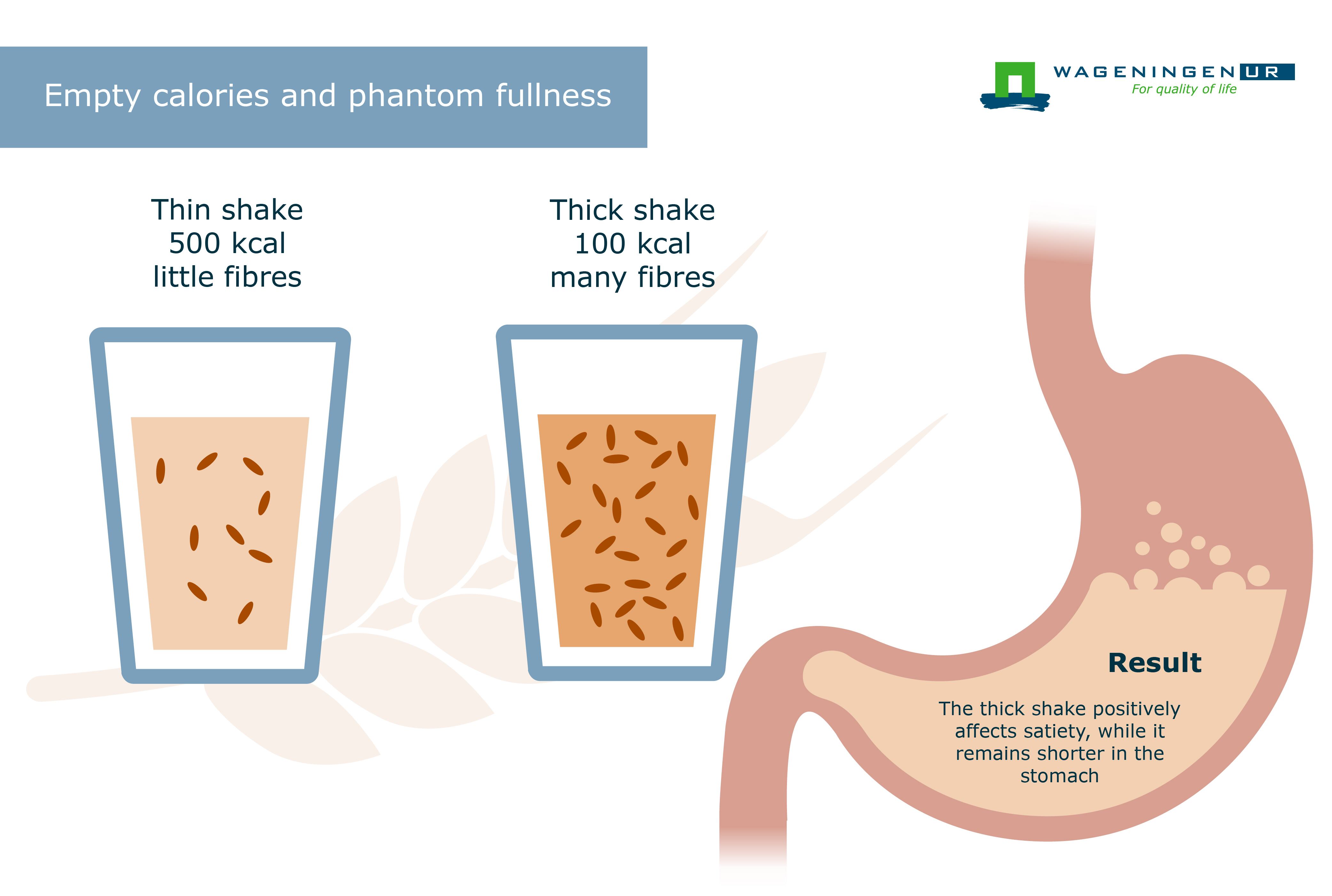The Dutch researchers from Wageningen University found that a dairy-based milkshake that was thick led to higher feelings of fullness despite containing one fifth of the calories of the other shake.
Participants were also less likely to want to eat something else after consuming the thick shake with 100 kcal, despite the fact that their stomachs were still relatively empty.
Increasing the viscosity is therefore less effective than increasing the energy density in slowing gastric emptying, they say, but viscosity is more important in increasing the perceived fullness.
“These results underscore the lack of the satiating efficiency of empty calories in quickly ingested drinks such as sodas. The increase in perceived fullness that is due solely to the increased viscosity, which is a phenomenon that we refer to as phantom fullness [and] may be useful in lowering energy intake,” they write.
The scientists used locust bean gum fibres – commonly used in baby food – to increase the adjust the consistency of the milkshakes and call for further studies to see if the results can be repeated with other fibres.

Researcher Guido Camps told FoodNavigator: “[The findings} underline the importance of oral exposure and the 'mouthfeel characteristics' of a food product when it comes to influencing appetite. This is at the least an indication that increasing the thickness of diet shakes may be an interesting avenue to pursue further.”
The study
The randomised crossover study involved 15 healthy men with an average Body Mass Index (BMI) of 22.6. The men were given 500 ml dairy-based milkshakes made up of 50% carbohydrate, 20% protein and 30% fat that differed in thickness and energy density, with one providing 500 kcal and the other 100 kcal.
After drinking the shakes, they underwent MRI scans to determine the time taken for the stomach to empty, provided appetite ratings and were given an ad lib amount of sandwiches and told to eat until pleasantly satisfied.
The thin low-calorie shake had the lowest gastric emptying time (a mean time of 26.5 minutes) followed by the thick low-calorie shake (41 minutes); 50 minutes for the thin high-calorie shake and 81.9 minutes for the thick, high-calorie shake.
But regarding appetite, the thick 100-kcal shake led to higher feelings of fullness (58 points at 40 minutes) than the thin 500-kcal shake (48 points at 40 minutes).
“Thick low-caloric liquid meals may leave people feeling fuller and more satiated, thereby preventing compensatory overconsumption afterward,“ they conclude.
Professor in Sensory Science and Eating Behaviour at Wageningen University and co-author, Kees de Graaf, said: “From these results we can conclude that fibre does not necessarily cause fullness in the stomach and satiety, but rather directly causes satiety.We do not yet fully understand this process and further research is required. Satiety can also be caused by eating slowly and extending the exposure to taste.”
Source: American Journal of Clinical Nutrition
“Empty calories and phantom fullness: a randomized trial studying the relative effects of energy density and viscosity on gastric emptying determined by MRI and satiety”
Published online ahead of print 8 June 2016, doi: 10.3945/ajcn.115.129064
Authors: Guido Camps, Monica Mars, Cees de Graaf and Paul A.M. Smeets
